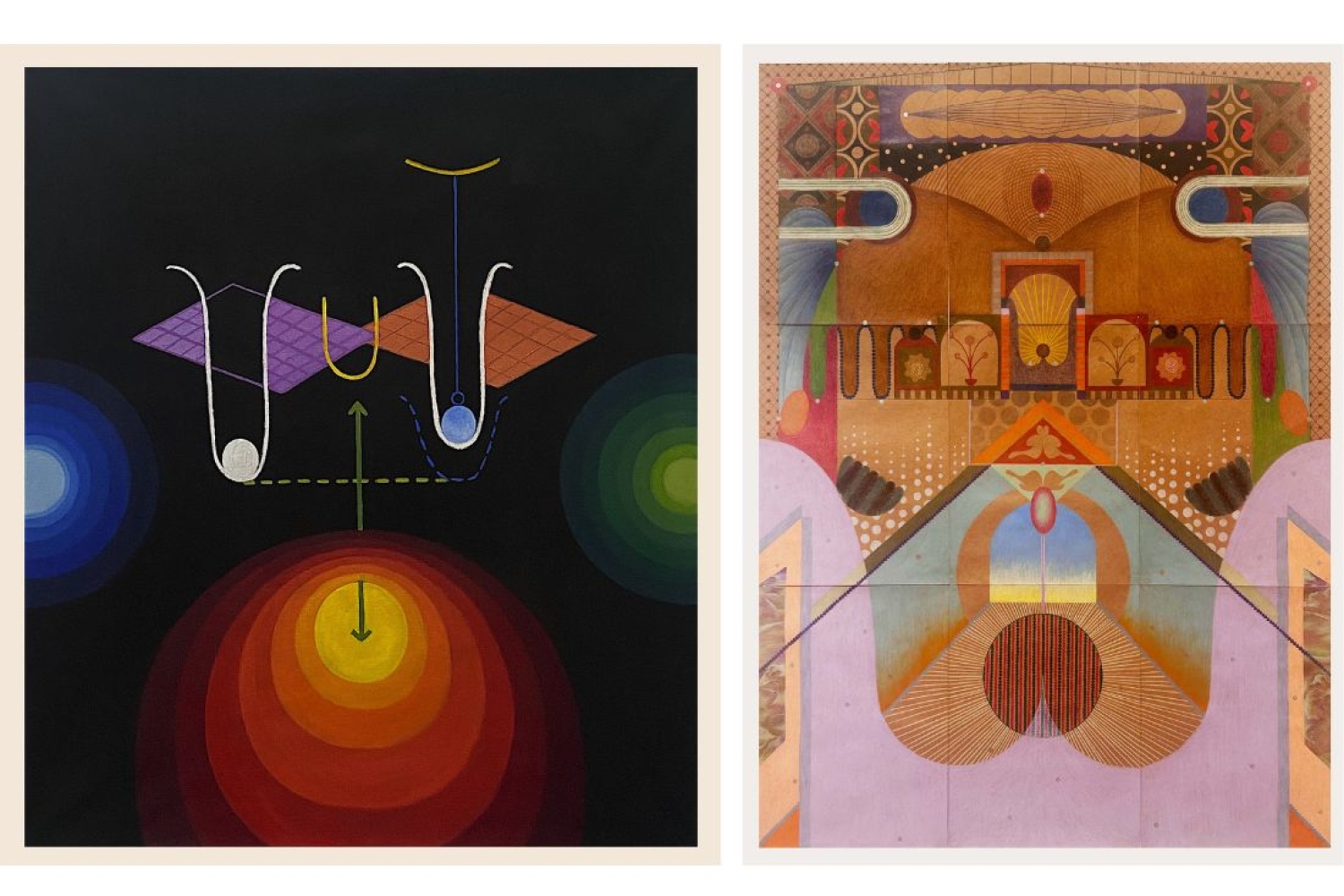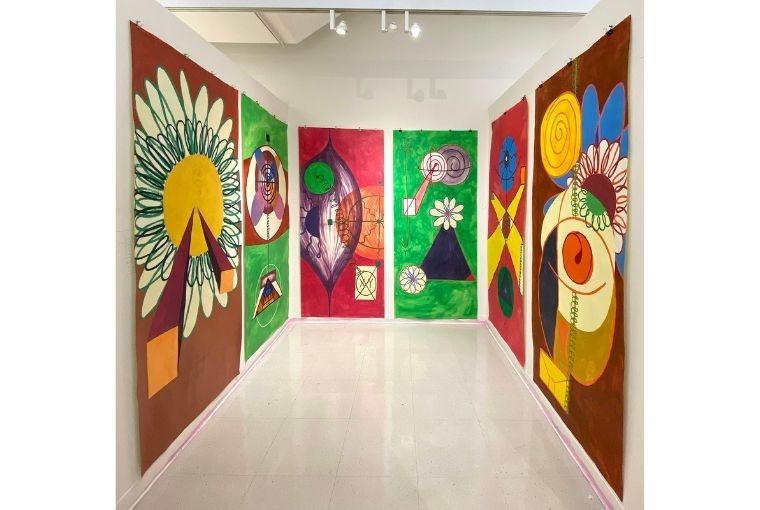

For abstract painter and drawer Srishti Dass, art seemed to be instilled within her environment, although she never claims to pin down its meaning. People, places, experiences, emotions, or objects — an artist is never devoid of these elements of life. The dialogue and musings thus born are what become the fodder for this New Delhi-born, New York-based artist’s transcendental creations. In Srishti’s words, ‘art is a direct result of the artist’s being and whatever controls our emotions and thoughts will eventually show in our art.’
Never having sought art overtly, she says, ‘my grandfather was always showing me different projects he was working on — calligraphy, ceramics, wood, watercolours — so I naturally picked it up as a hobby.’ As goes the tale, once those around her began appreciating her work and complimenting her on having a ‘good hand’, it flowed as a natural progression of things. ‘I didn’t start choosing it until my teenage years when I was really depressed and needed something to isolate me from others’, she says.

Her drawings are then the ‘tangible result of introspection’. Through her intuitional works, she discovers ways to bridge her internal anxieties and subconscious with the external world. ‘My main inspiration comes from nature and the experience of being human in this world. I want to see the world how it could have been instead of what it is.’
In Srishti’s world, ’art’ assumes diverse forms. On some days, it morphs into therapy, a language, a liberating force, and on others, it is simply a job. Maintaining a delicate balance, she underscores the importance of letting art be art. ‘If I take it too seriously, then it loses the one thing I need from it, comfort; a way to take the rest of the world seriously’, she illuminates.
While coloured pencils monopolised her artistic palette for two years, Srishti's oeuvre now sprawls across oil painting, watercolours, inks, and clay. Experimentation extends to unique techniques, like her version of pouncing, where she pokes holes in a canvas to birth shapes and textures. Amid this diversification, coloured pencils remain a constant love, almost as an ever—present anchor in her creative landscape.
Her drawings often host an interplay of geometric patterns, masterly gradients, and an oddly perplexing yet pleasing symmetry. Breaking down this system of rhythmic repetitions for us, she reveals about her art, ‘They have definitely become more symmetrical over the years without any conscious decision from my side. I am attracted to hard-edge geometry and spacial illusions which often lead themselves to symmetry as a way of balancing themselves out. Symmetry lives in nature which is a big influence on my practice.’
Even so, her art’s essence remains fluid. What she wants her audience to extract from her work transcends the visual. It’s an invitation to experience time and space, to create a mental space that prompts contemplation. ‘Take a moment to just look. Create a space that you can’t get otherwise. A good way to do these vague concepts is by physically imagining yourself in the works. That’s how I make them. That’s the only tangible thing you can take from my art (for free). Think of a tiny version of you sitting on the edges, floating in the gradients, jumping on the patterns.’
Getting lost within the dots and lines of her work, she hopes for her viewer to mindlessly (or perhaps, mindfully) wander away from the ‘path of binary thinking and question the bubble that humans are living in.’ In other words, the ‘meaning’ of her work ‘ends when the work goes to the public. The ‘meaning’ becomes an experience.’
Having exhibited her work over the past 7 years in New York, Srishti turns her eyes now to New Delhi, admitting, ‘I do think Delhi is still very traditional in the kind of art they like. There needs to be more contemporary artists in Delhi galleries. I am trying to do more shows in Delhi in the coming year, so my opinion might change.’
In the dance between art and the self, evolution is what ultimately becomes the heartbeat of a creative journey. There’s an organic symbiosis between personal metamorphosis and the artistry we birth. Yet, Srishti’s canvas often beckons for more than just a nod to growth; it orchestrates a consistent change in daily existence. In her experience, more often than not, changing her lifestyle to accommodate what her art is asking of her becomes the core of the practice. Art may demand you to abandon routine, be more patient, less patient, detach from your comfort, or much else; stripped down, it is all a continual conversation, a nebulous movement between creator and creation.
Prepping her canvas, Dass looks ahead to a period of transition in her craft. ‘I’m always excited to see all the new art I’m gonna make and where it leads me. My art is so young in this world, barely teens themselves. I’m not trying to create remarkable pieces but a memorable practice as a whole,’ she elucidates. The dynamic, driven, and distinct artist, with her soulful, honest, and even unsettling work, is exploring and breaking the bounds of familiar art, marking a trail that demands respect.
Words Devyani Verma
Date 17.01.2024